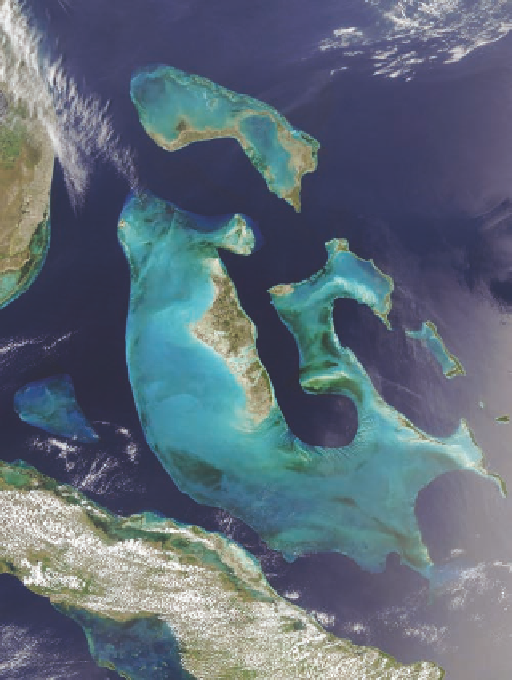Geoscience Reference
In-Depth Information
Figure 12.14 Fossils in limestone.
This rock formed tens of
millions of years ago when dead ammonites accumulated on the
ocean bottom and calcium carbonate subsequently precipitated
within the matrix of shells. The combined materials then lithified
to form limestone.
dolomite
. Under more unusual conditions, silica can precipitate
from solution at the bottom of the ocean to form
lint
or
chert
.
In addition to forming in marine environments, chemically
precipitated rocks also develop within continental locations
when minerals evaporate from concentrated solutions
(Figure 12.15a). These minerals collect at the surface and
are called
evaporites
. As you can imagine, evaporates are
most likely to evolve in semi-arid to arid regions such as the
southwestern United States (Figure 12.15b).
Figure 12.13 Carbonate depositional environments in the
Bahama Islands.
In this region, carbonate minerals are
precipitating in the shallow waters of the island chain. They form
the whitish haze that surrounds the islands.
Evaporation
Shallow part of sea or lake
Soluble minerals settle
to bottom of basin
Evaporites form when
evaporation occurs
(a)
(b)
Figure 12.15 Formation of evaporites.
(a) Evaporites form when minerals recrystallize on the exposed surface after waters evaporate
from shallow oceans or inland lakes. (b) The whitish deposits in this image are salts and other highly soluble minerals that recrystallize as a
crust when evaporation occurs in this extremely arid environment of Death Valley.
Dolomite
Sedimentary rock consisting of over 50% calcium-
magnesium carbonate (CaMg[CO
3
]
2
).
Evaporites
Surface salt residue that collects through the
evaporation of water and the crystallization of sodium.













































































































































